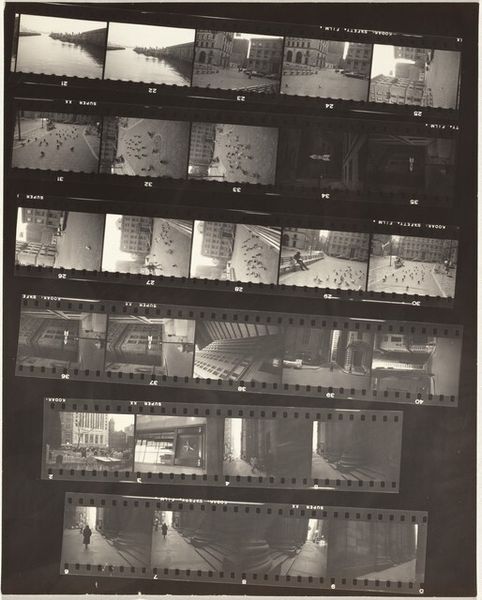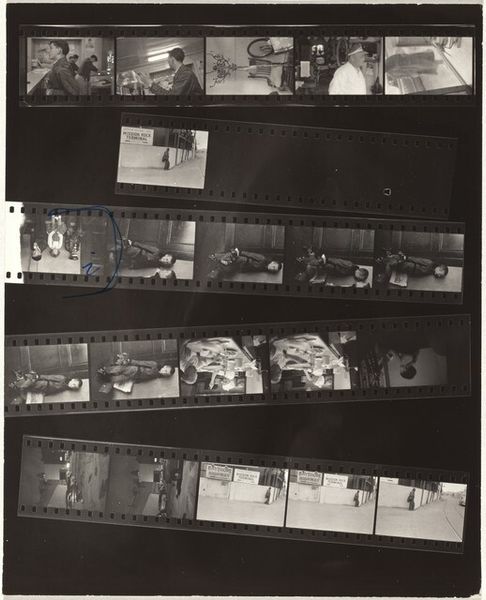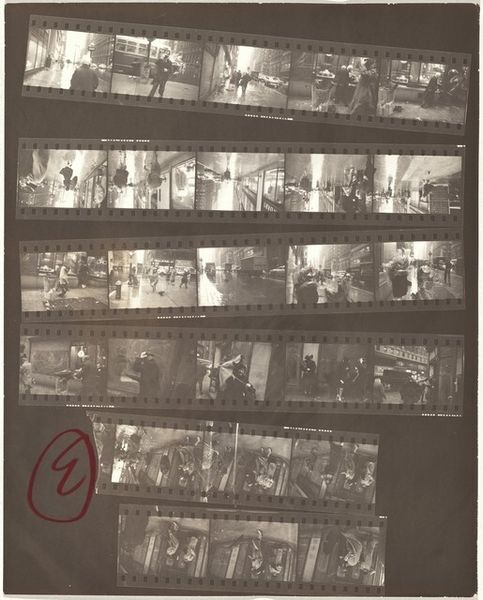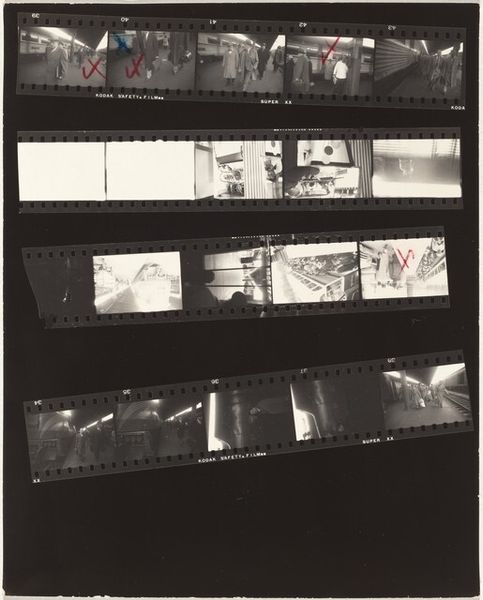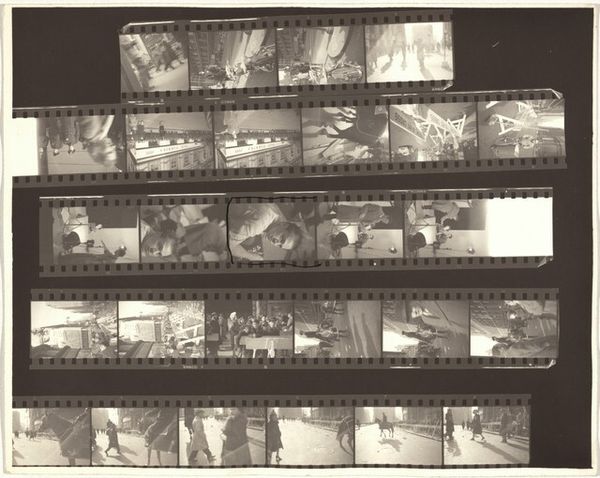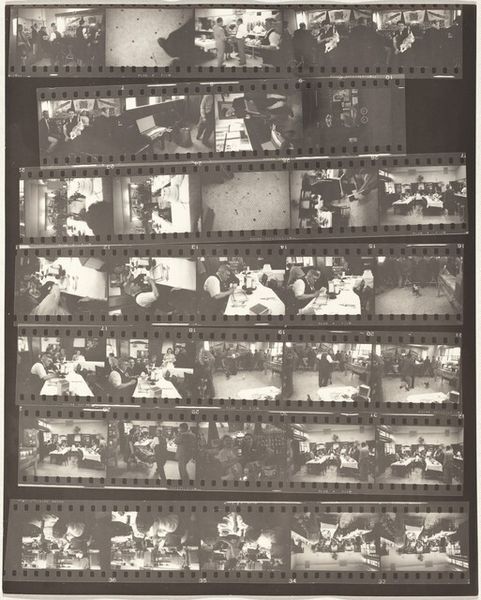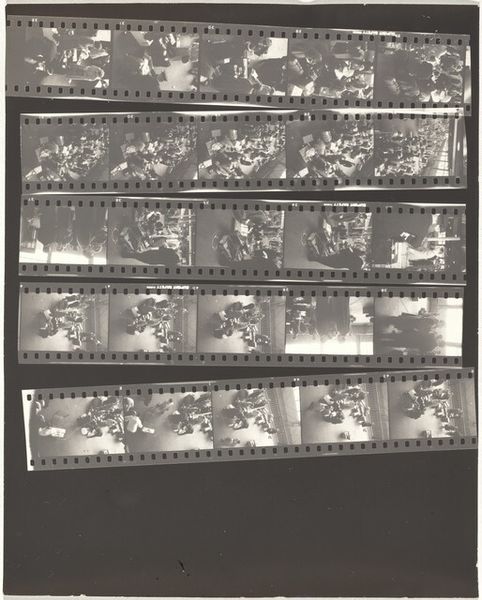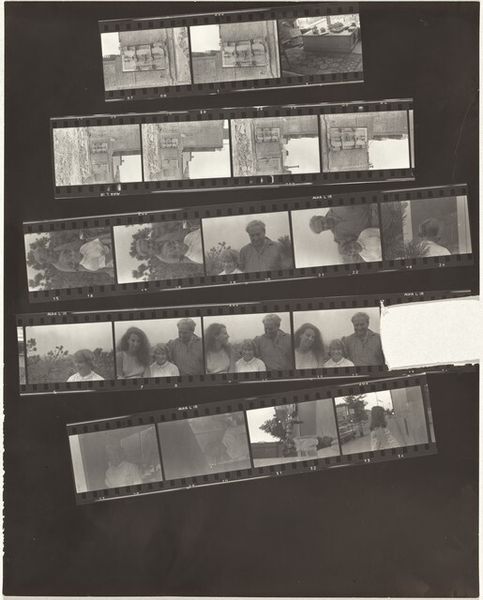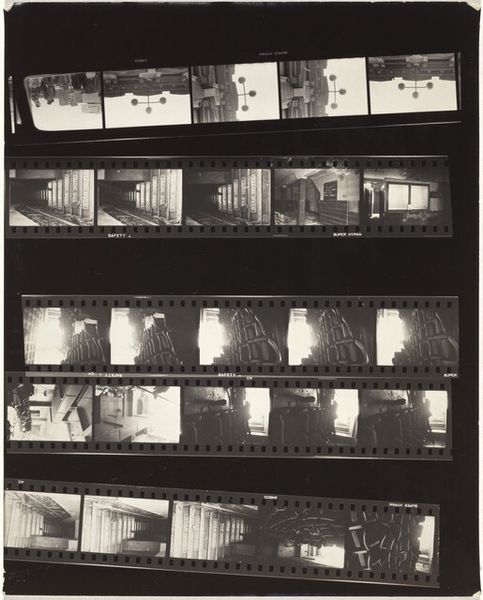
Dimensions: overall: 25.3 x 20.4 cm (9 15/16 x 8 1/16 in.)
Copyright: National Gallery of Art: CC0 1.0
Editor: Here we have Robert Frank's "Early New York City no number," a gelatin-silver print from the early 1950s. The images are organized on the page as strips of film. The texture created by this material seems less interested in capturing detail and more interested in an overview of photographic possibilities. What's your read? Curator: I see the very process of photography, the act of making these images, foregrounded. The raw materiality of the film strip challenges the traditional notion of the photograph as a polished, singular object. The strips are mounted, revealing their origin and the means of production. How do the different vignettes resonate with you? Editor: The variety, from blurry streets to interiors and then, something quite abstract—it's hard to put them together, yet they’re physically bound on the same piece. Almost like contact sheets. It’s interesting to see these usually unseen in-between moments. Do you think this affects the meaning? Curator: Absolutely. Frank isn't presenting us with finished art objects but rather the raw materials of his artistic labor. This resonates with the post-war interest in process, echoing movements that valorized action over finished form, the means by which objects came into being, labor itself. He's using materials generally considered "low" in the artistic hierarchy, transforming them through presentation and highlighting their connection to everyday life and, furthermore, industrial manufacture. This shift emphasizes the consumption and experience of modernity in early post-war New York, where he reframes ideas of high and low art, challenging conventions. Editor: I see, so it's almost like he's elevating the photographic process itself to the status of art. By displaying the contact sheets, the strips, he emphasizes the artist's hand and challenges what we expect from a photograph. Curator: Precisely. It is more about production. Each image isn't precious; it's the collective experience, the relentless process of image-making, that carries weight. Editor: I never considered that Frank might be using film to consider a new relationship to photographic labor. The work feels less like a precious memento, but a step on the path to something new. Thanks!
Comments
No comments
Be the first to comment and join the conversation on the ultimate creative platform.

